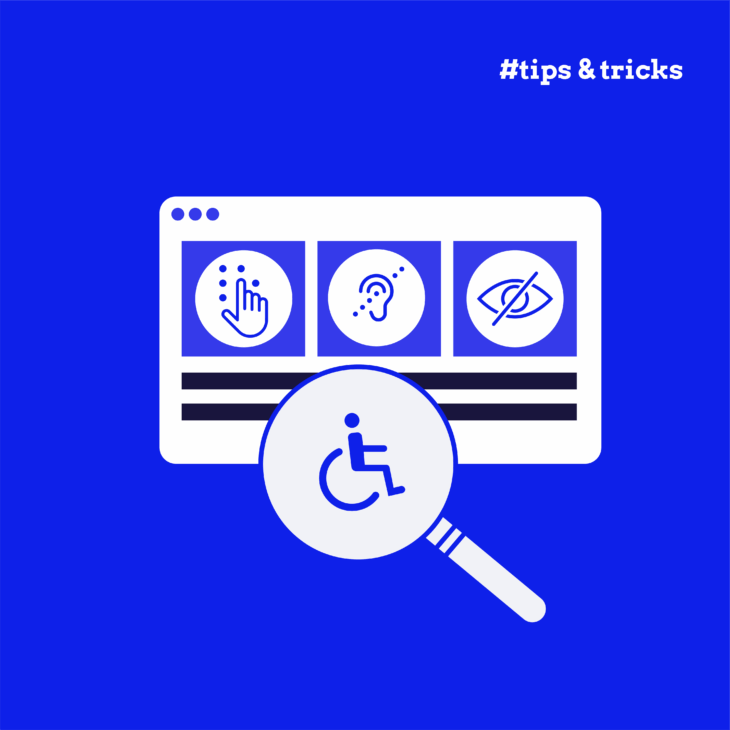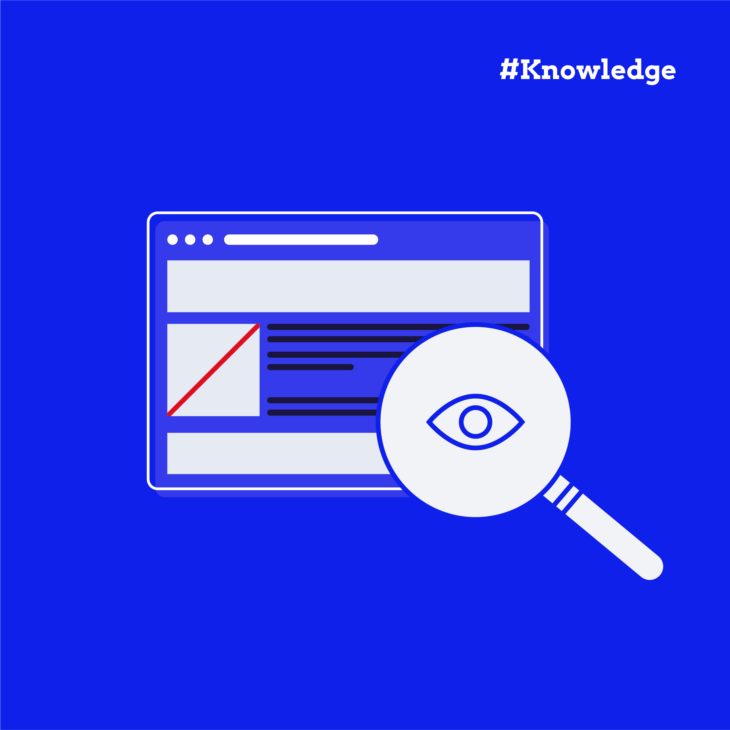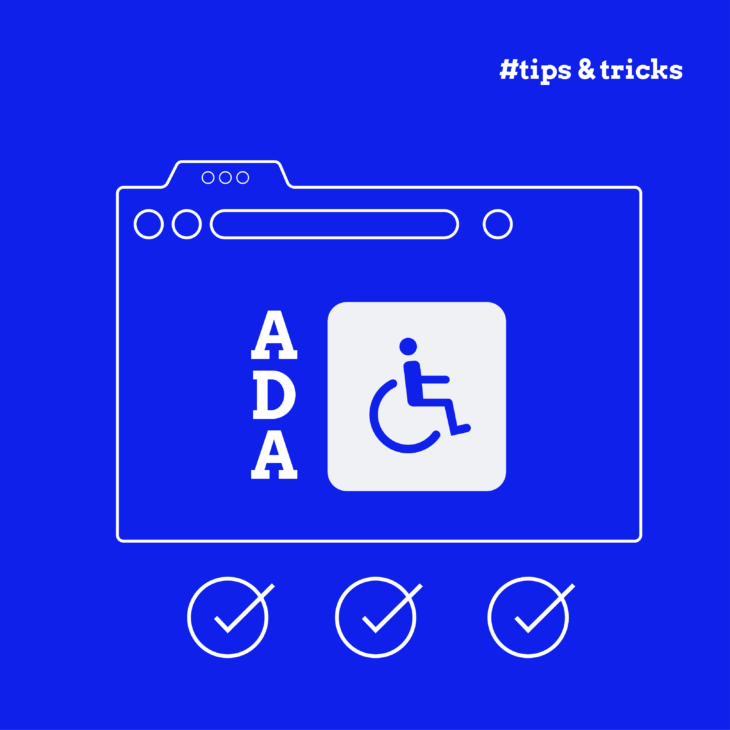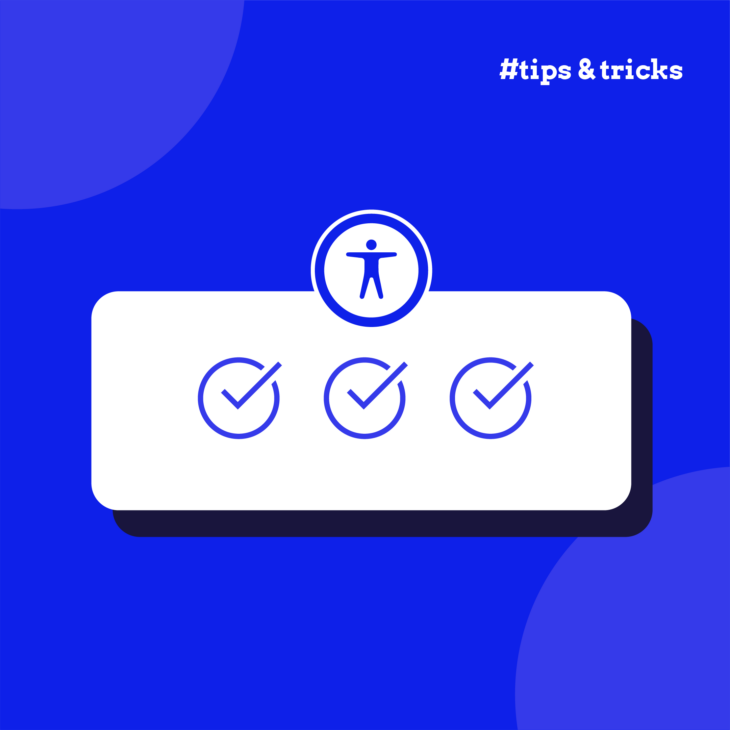If you have a business, chances are you don’t want to exclude potential customers. Unfortunately, if you’re not making your website accessible, that’s precisely what’s happening.
People with disabilities are 50% more likely to face barriers when using online services compared with those without. One of the reasons why this is happening is because many organisations don’t know how to properly assess their websites against established accessibility standards and either leave it for the future or ignore it altogether.
However, businesses need to do better. As Kristina Barrick at Scope rightly points out in the Lloyds Bank UK Consumer Digital Index 2020:
Disabled people mustn’t be forgotten when it comes to technology, more needs to be done to create an inclusive digital world.
Beyond the ethical importance of inclusivity, organisations now face mounting legal pressure to meet accessibility requirements. Americans with Disabilities Act (ADA) lawsuits increased by 320% from 2013–2021, and the European Accessibility Act’s new directive came into effect in June, forcing businesses in the EU to comply with their accessibility standards.
So, how do you avoid legal troubles and make sure your website is fully accessible? The best start is a WCAG audit, which is a thorough evaluation of your website against the Web Content Accessibility Guidelines. These are internationally recognised standards developed to make the web more accessible to people with disabilities.
While the guidelines themselves are freely available, conducting a proper audit requires expertise, specialised tools, and a methodical approach that many teams lack. That’s why only trained professionals can be trusted to do one in the first place. Still, if you want to know more about what happens behind the curtains, we’ll walk you through all the important steps of a WCAG audit and teach you how to understand the results and maintain compliance over time.
Let’s jump into it!
Myth buster: is there an official WCAG certification?
Let’s get something straight from the beginning: there’s no such thing as an “official WCAG certificate” for your website.
You might see companies offering to “certify” your site or provide a “WCAG certification badge,” but these aren’t official designations recognised by the W3C (the organisation that maintains WCAG). The W3C doesn’t run a certification programme for websites.
Some organisations might issue a “statement of conformance” if your site passes their audit, and that’s perfectly legitimate. It’s essentially their professional assessment that your site meets WCAG standards at a specific point in time. Just be aware it’s not an official certification from the W3C.
Understanding WCAG audit goals and conformance levels
Before diving into the nuts and bolts of a WCAG audit, let’s start with the basics, meaning the four principles of WCAG. Your four accessibility commandments, if you will.
| Principle | What does it mean? |
|---|---|
| Perceivable | Information and user interface components must be presentable to users in ways they can perceive. This means people need to be able to see or hear content – it can’t be invisible to all their senses. |
| Operable | User interface components and navigation must be operable. Everyone should be able to use your interface, whether they’re using a mouse, keyboard, voice commands, or other assistive technologies. |
| Understandable | Information and the operation of the user interface must be understandable. This means your content should be readable, your site should behave predictably, and users should get help avoiding and correcting mistakes. |
| Robust | Content must be robust enough that it can be interpreted by a wide variety of user agents, including assistive technologies. Your website should work reliably across different browsers and assistive technologies, now and in the future. |
Next, you’ll need to understand what your site will be measured against. WCAG defines three levels of conformance, and each builds upon the previous one:
- Level A: This covers the most basic and critical accessibility requirements, and meeting these standards means you’re addressing major barriers that might completely prevent certain users from accessing your content.
- Level AA: This level includes additional criteria that remove significant barriers and is widely accepted as the standard compliance target. Most accessibility experts consider this level the sweet spot between feasibility and meaningful accessibility.
- Level AAA: The highest level represents exceptional accessibility with enhanced requirements. While admirable to aim for, Level AAA might not be achievable for all content types and isn’t typically required for legal compliance.
Ideally, you’ll aim for at least WCAG 2.1 Level AA compliance. This is the standard requirement for businesses under the Americans with Disabilities Act (ADA).
For European businesses, it’s a bit more nuanced. The European Accessibility Act (EAA) doesn’t directly require WCAG conformance. Instead, it points to the harmonised standard EN301549, which then references WCAG guidelines.
So what does this mean for you? While WCAG isn’t technically mandatory under the EAA, it’s still your best bet for achieving accessibility and testing whether your site meets the requirements. Think of it as the unofficial gold standard – following WCAG 2.1 Level AA will help you tick all the right boxes for both American and European regulations.
The newer WCAG 2.2 version adds a few more criteria but follows the same structure.
🤔 Wondering if there’s a big difference between ADA standards and WCAG requirements? Read all about it in our piece on WCAG vs ADA!
Some example objectives of a proper WCAG audit include:
- Finding accessibility barriers across all major user journeys.
- Recording specific violations and how they affect different users.
- Creating a starting point for ongoing accessibility checks.
- Giving you clear, practical steps for fixing problems.
How to conduct a WCAG audit
Running a thorough accessibility audit isn’t something you can knock out in an afternoon. The Web Content Accessibility Guidelines have their own evaluation methodology called WCAG-EM (WCAG Evaluation Methodology), which provides a structured approach for assessing websites.
While you might be tempted to run a WCAG audit yourself, the most reliable approach is to hire professional auditors with accessibility expertise. However, understanding what the WCAG-EM process involves helps you prepare effectively and make the most of professional services. Let’s explore what happens before, during, and after a proper WCAG audit.
Prepare for an audit
Before the professionals step in, there’s plenty you can do to get ready:
- Understand WCAG guidelines: Familiarise yourself with the current Web Content Accessibility Guidelines to know what standards your site needs to meet. The A11Y Collective offers excellent courses like “Web accessibility, the basics” to help you build this foundation.
- Define your audit scope: This crucial planning step determines what gets tested:
- Create a map of all your site’s pages and functionality.
- Document your main user journeys and tasks.
- List any third-party components or embedded content.
- Confirm which WCAG level you’re targeting (typically Level AA).
Remember: WCAG-EM also requires including randomly selected pages in your sample, with the exact number depending on your site’s size.
During the professional audit
When accessibility experts start work, they’ll typically start with automated testing to provide a solid baseline. They would use tools like WAVE, aXe, or SiteImprove to scan your templates and find common accessibility issues like missing alt text or heading structure problems. However, these findings will be documented as a starting point only because automated tools only catch about 30–40% of accessibility issues, and we can’t count on them alone.
Here’s a perfect example: An automated tool might flag that a button lacks a proper name, but it won’t catch when developers use a <span> instead of a proper <button> element. This is actually a much bigger problem – keyboard and screen reader users won’t be able to interact with it at all!
This is why experts then move on to manual testing, which includes:
- Keyboard navigation and logical focus order.
- Proper semantic HTML structure.
- Colour contrast ratios beyond what automated tools can verify.
- Screen reader compatibility using NVDA, VoiceOver, or JAWS.
- Captions and transcripts for media content.
- Dynamic content behaviour when interacted with.
- Form functionality and error messaging.
- How the site performs across different screen sizes.
- Reflow and text zoom
- Page titles
The audit scope you defined earlier determines exactly what gets tested. If your site includes PDFs, complex data tables, carousels, or mobile-specific interactions, these all become part of the standard testing process – not some optional extra. Every feature within your defined scope gets the full accessibility treatment.
While they’re working, expert auditors create detailed reports that will describe:
- Specific WCAG success criteria violations.
- Clear steps to reproduce problems.
- Practical recommendations for fixing each issue
After your audit
Congrats! Your audit is complete, and now the real work can begin. The obvious first step is to implement the recommended fixes, but that’s not the end of it. After that, you need to perform validation testing so you can make sure you’ve not created more problems than you’ve solved. This usually includes retesting each resolved issue, verifying that your fixes didn’t create more problems, documenting the improvements, and finally updating the accessibility documentation.
If you’ve been successful, you can continue business as usual with the added step of ongoing monitoring. Accessibility is a journey, not a destination, so an audit is just the first step.
This journey might look different for each company, but generally, monitoring means:
- Scheduling annual professional audits and monthly automated scans.
- Implementing regular manual testing by your team.
- Pre-launch testing for new features.
- Training content creators on accessibility best practices.
Sample WCAG 2.2 AA audit checklist
Curious about what actually gets tested? Here’s a simplified checklist that covers some of the main areas professional auditors examine. Keep in mind this isn’t exhaustive – a complete audit involves testing dozens of specific success criteria – but it gives you a sense of what to expect:
Page structure and navigation
- Are headings used correctly and in the right order (H1, H2, H3)?
- Does the page have a descriptive and unique title?
- Can users skip to main content with a “skip to main content” link?
- Is the focus order logical when navigating with the Tab key?
- Can users navigate through all interactive elements using only a keyboard?
Images and media
- Do all images have appropriate alt text (or marked as decorative if purely visual)?
- Do videos have accurate captions or transcripts?
- Do audio files have transcripts?
Colour and visual design
- Does text meet minimum colour contrast ratios (4.5:1 for regular text, 3:1 for large text)?
- Is information conveyed through more than just colour alone?
- Can text be resized up to 200% without losing functionality?
- Does content reflow properly when zoomed?
Forms and interactive elements
- Do all form fields have clear, visible labels?
- Are error messages helpful and clearly associated with the relevant fields?
- Do buttons and links have descriptive text or labels?
- Can users pause, stop, or hide moving content?
- Are time limits adjustable or can they be turned off?
Screen reader compatibility
- Are ARIA labels used correctly (and only when needed)?
- Do dynamic content updates announce properly to screen readers?
- Are status messages communicated to assistive technologies?
Mobile and touch
- Are touch targets at least 24×24 pixels (or have adequate spacing)?
- Does the site work in both portrait and landscape orientations?
This checklist gives you a starting point, but remember: professional auditors test each criterion in detail across your selected pages and use their expertise to catch issues that might not be obvious from a simple checklist.
Professional vs. in-house WCAG audits: what’s at stake
When it comes to accessibility audits, you have two choices: doing it yourself and hiring professionals. The former is obviously the more budget-friendly option, but only in the short term. While in-house testing has its place, professional WCAG audits offer distinct advantages that are hard to match.
First, professional audits are typically conducted by specialists who combine both manual and automated testing methods. These experts use validated tools and techniques to put your website against WCAG success criteria. They’re also equipped to handle projects of any size or complexity and can work within your timeline constraints.
However, and perhaps most importantly, expert auditors can spot issues that automated tools simply miss. For example, an automated scanner might verify that your form fields have labels, but only a human tester can determine if those labels actually make sense to users. Similarly, tools can check if alt text exists for images but can’t evaluate whether that text meaningfully describes the image or provides equivalent information.
Professional auditors also stay current with evolving accessibility standards, keeping you ahead of regulatory changes. Their comprehensive reports include not just what’s wrong, but practical, actionable steps to fix each issue with clear timelines for implementation.
For example, they’re aware of all the common mistakes companies make when they attempt in-house audits:
- Over-reliance on automated testing or accessibility overlays which often creates a false sense of security (we recommend watching this great video by Haben Girma, discussing the dangers of accessibility “quick fixes”).
- Limited testing across different assistive technologies (many organisations lack access to multiple screen readers, magnifiers, and other tools).
- Incomplete documentation that makes remediation difficult to track and prioritise.
Still, that doesn’t mean that there’s nothing your in-house team can do to improve accessibility; it’s just that they would have different responsibilities. Ideally, they can handle day-to-day monitoring and maintenance, while professional audits will serve as crucial validation points – similar to how companies use external financial auditors alongside internal accounting teams.
The A11Y Collective’s expert-led audit solution
The audit offered by The A11Y Collective is based on WCAG Evaluation Methodology (WCAG-EM) and delivered by IAAP (International Association of Accessibility Professionals)-certified specialists who understand both technical requirements and user needs.
Here is what it includes:
- A brief intake meeting to discuss your specific goals, concerns, and priorities. It’s used to define the scope of the audit and identify your target compliance level.
- Selecting a representative sample of up to 12 different pages or templates from your website to ensure we cover your main user journeys, functionality types, and content areas without unnecessarily testing duplicate patterns.
- A combined testing process:
- Manual evaluation using multiple screen readers and other assistive technologies.
- Keyboard-only navigation testing across different browsers and devices.
- Automated scanning with trusted tools to identify technical compliance issues.
- Assessing each page against all relevant WCAG criteria, documenting:
- Clear pass/fail status for each criterion.
- Specific examples of non-compliance with screenshots and code snippets.
- Plain-language explanations of how these barriers affect real users.
The final deliverable is an actionable report including:
- Detailed findings organised by WCAG criterion.
- Prioritised remediation recommendations based on impact and complexity.
- Practical implementation guidance for your development team.
Our standard timeline is four weeks from kickoff to final report, though this can be adjusted based on your site’s complexity or urgent needs.
So, how much does a professional WCAG audit cost?
Audit pricing varies significantly based on several factors: the size and complexity of your website, the number of templates and unique pages being tested, and the depth of testing required.
Across the industry, you can expect to pay anywhere from €5,000 to €15,000+ for large, complex platforms with extensive functionality. Some agencies charge hourly rates (typically €100–200 per hour), while others offer fixed-price packages.
At €5000, our professional audit represents excellent value compared to the potential cost of litigation – which can easily run into tens of thousands of euros even for straightforward cases. More importantly, you’re getting a thorough evaluation from IAAP-certified specialists who understand both technical requirements and real-world user needs.
Book your expert WCAG audit today
As you can now understand, ensuring your website meets accessibility standards is becoming increasingly important for many reasons: legal compliance, user satisfaction, and your organisation’s reputation. While understanding the audit process is a great start and will help you prepare, it’s still not enough to conduct a proper WCAG assessment, as it requires specialised expertise and tools that many teams simply don’t have.
The key takeaways from this guide highlight the comprehensive nature of proper accessibility testing: automated tools catch only 30–40% of issues, manual testing requires specialised knowledge, and maintaining compliance is an ongoing process rather than a one-time fix.
The A11Y Collective brings proven expertise to this challenge. Having trained thousands of professionals in web accessibility, our team has unique insight into the common obstacles organisations face and how to overcome them with practical, implementable solutions.
Don’t leave your accessibility compliance to chance – book your expert-led WCAG audit today!
Ready to ensure your website is fully accessible?
Get a professional WCAG audit from certified experts. Identify barriers and get actionable steps for compliance.




